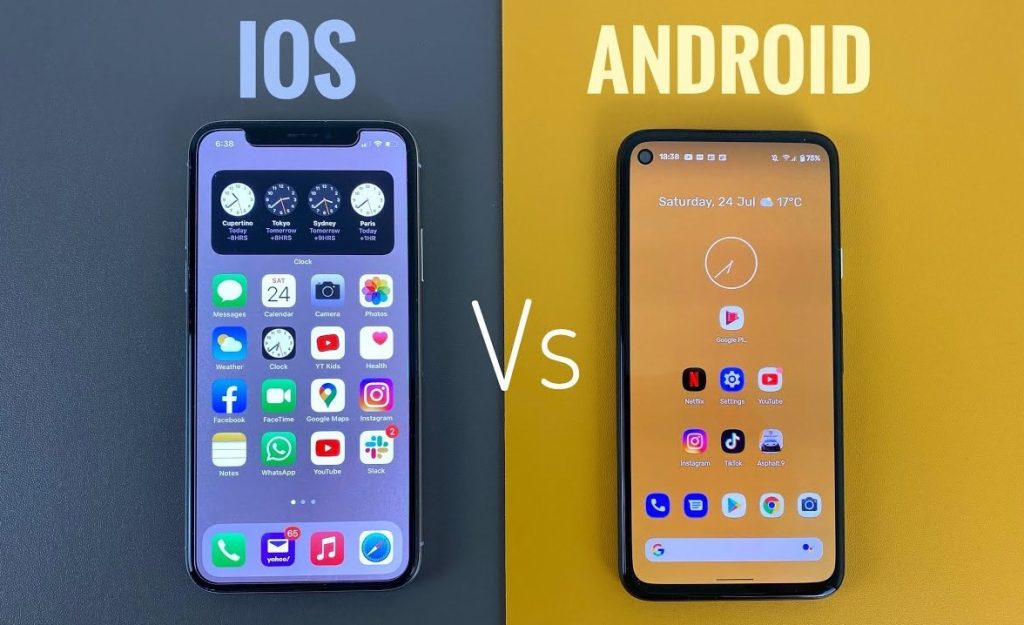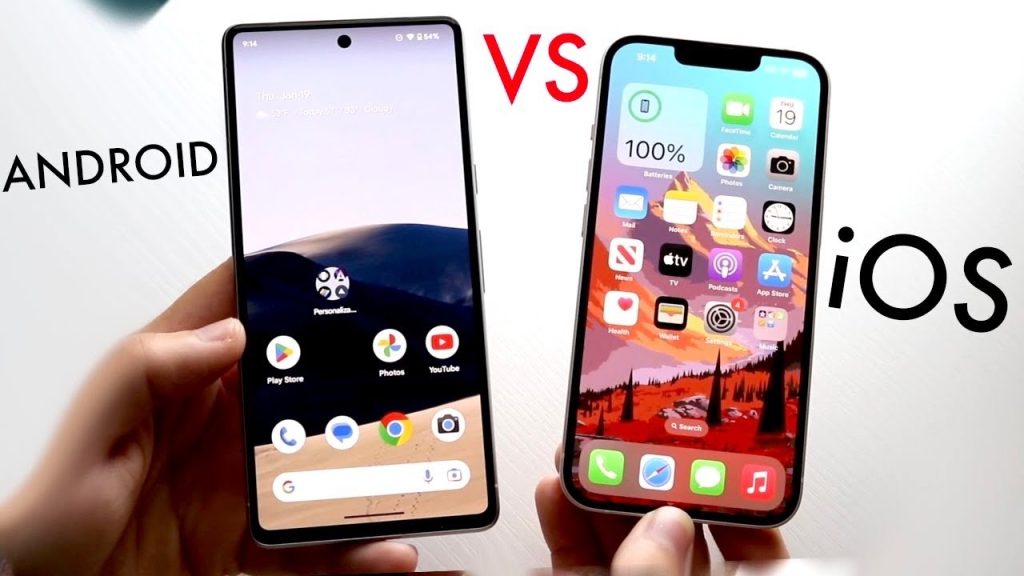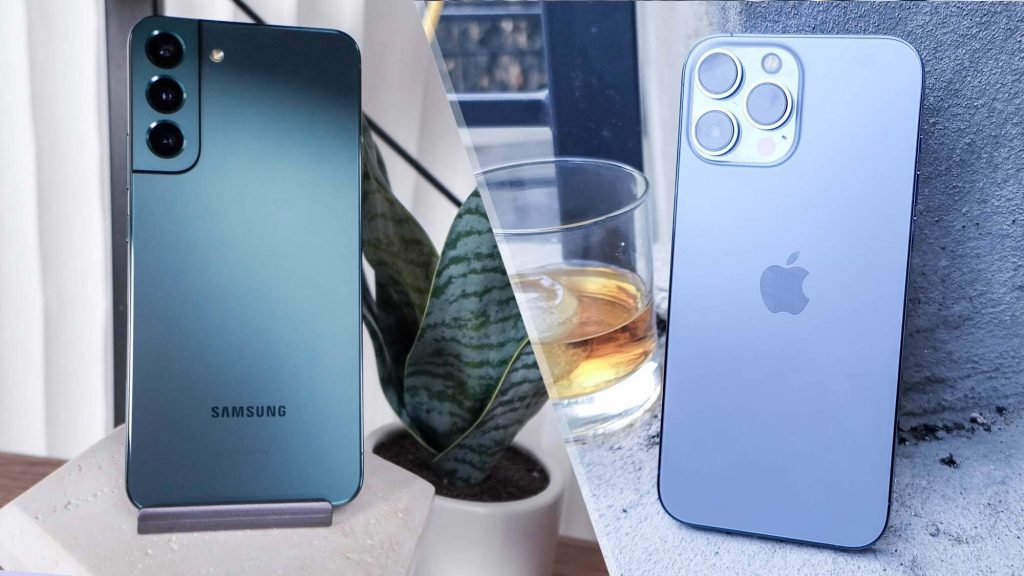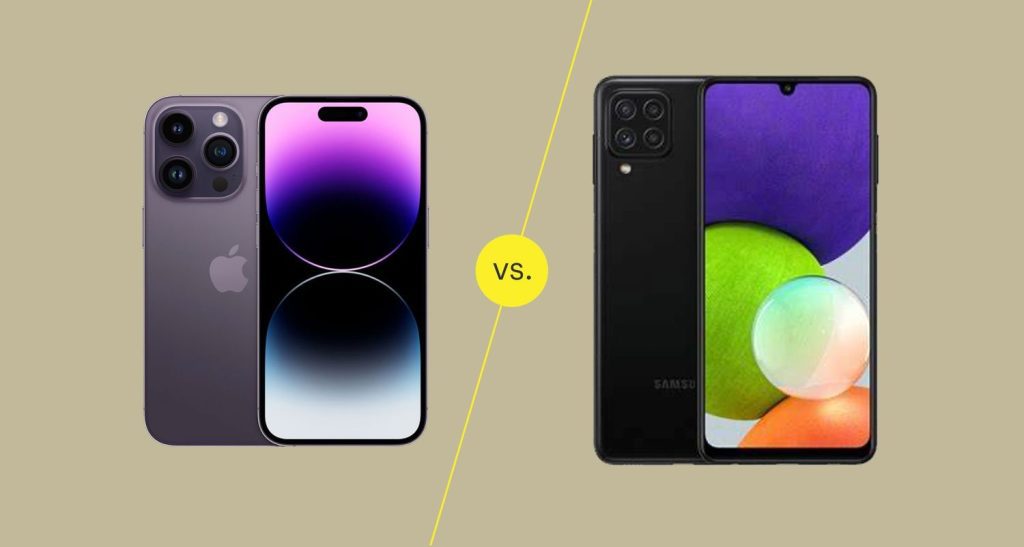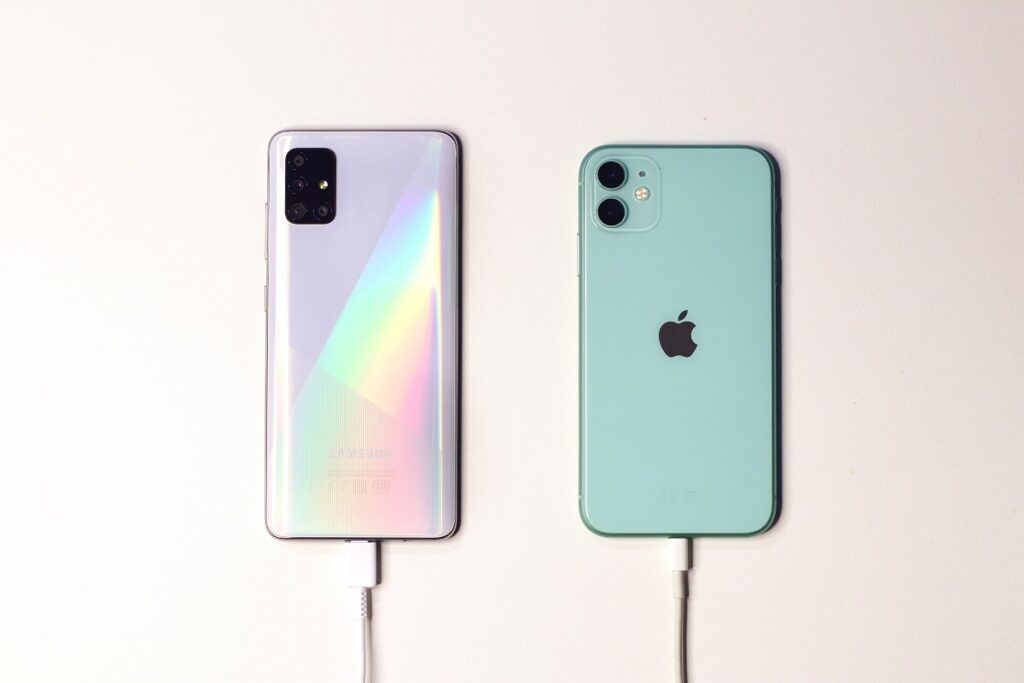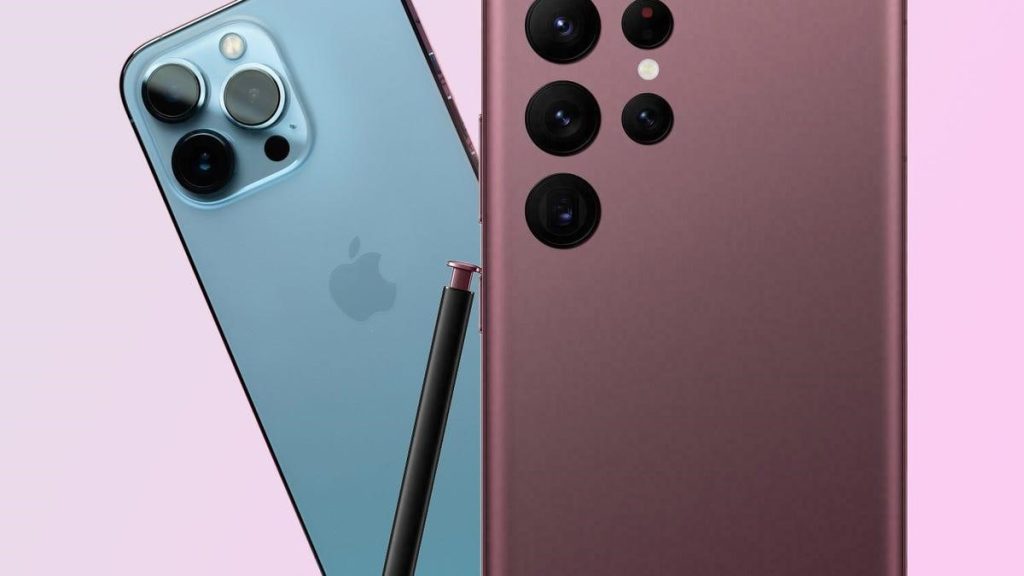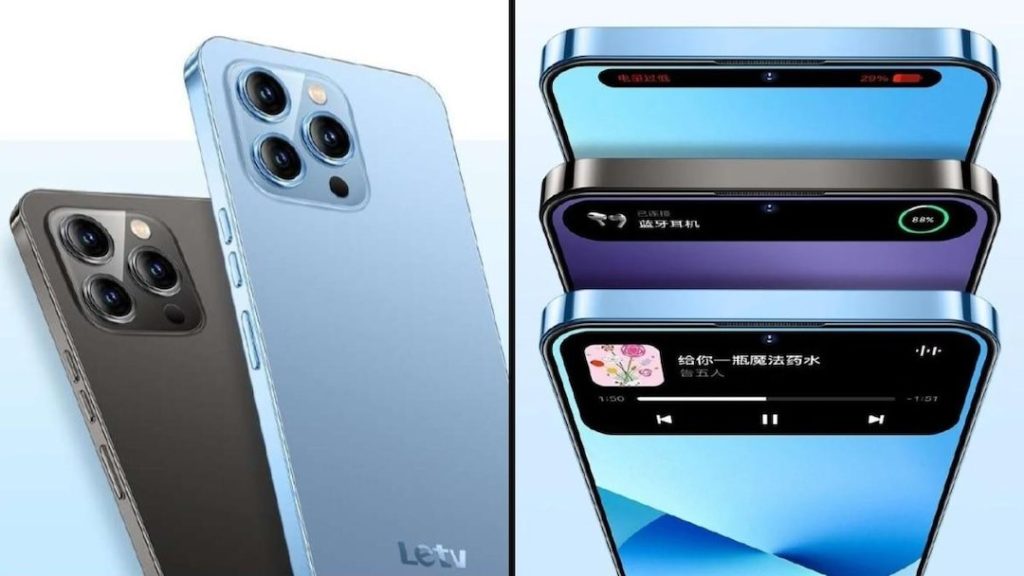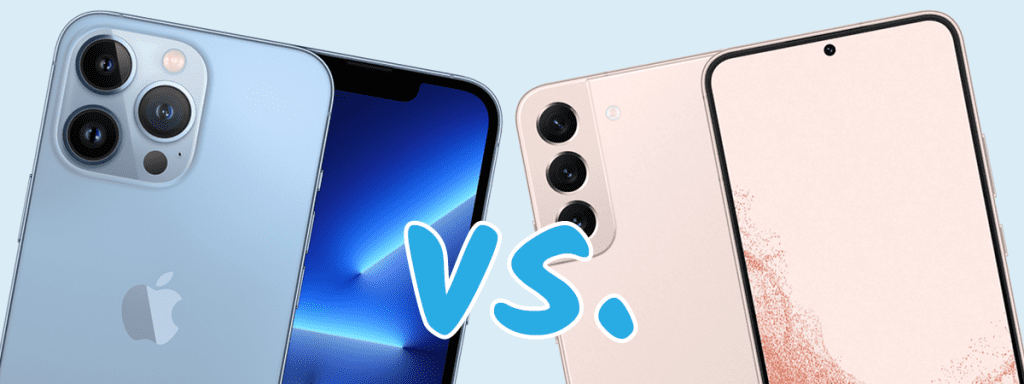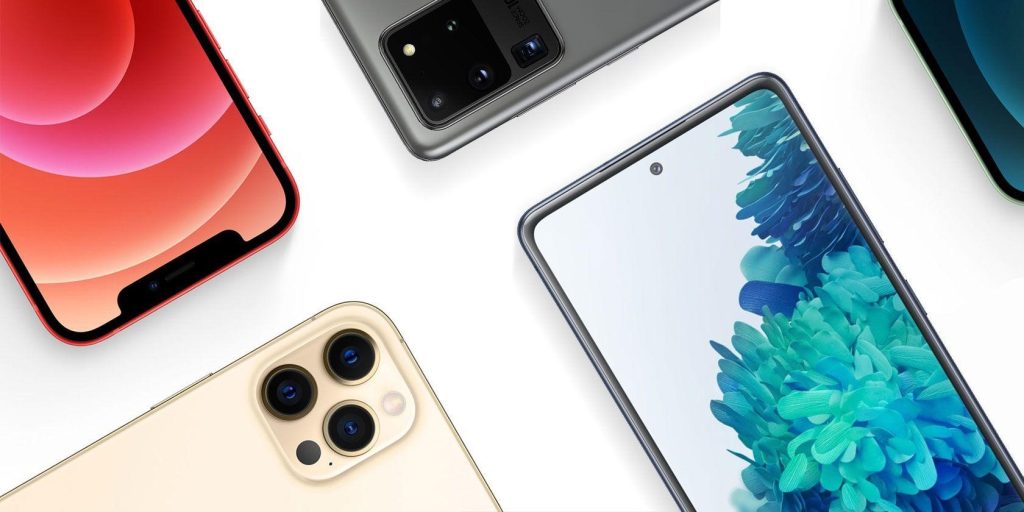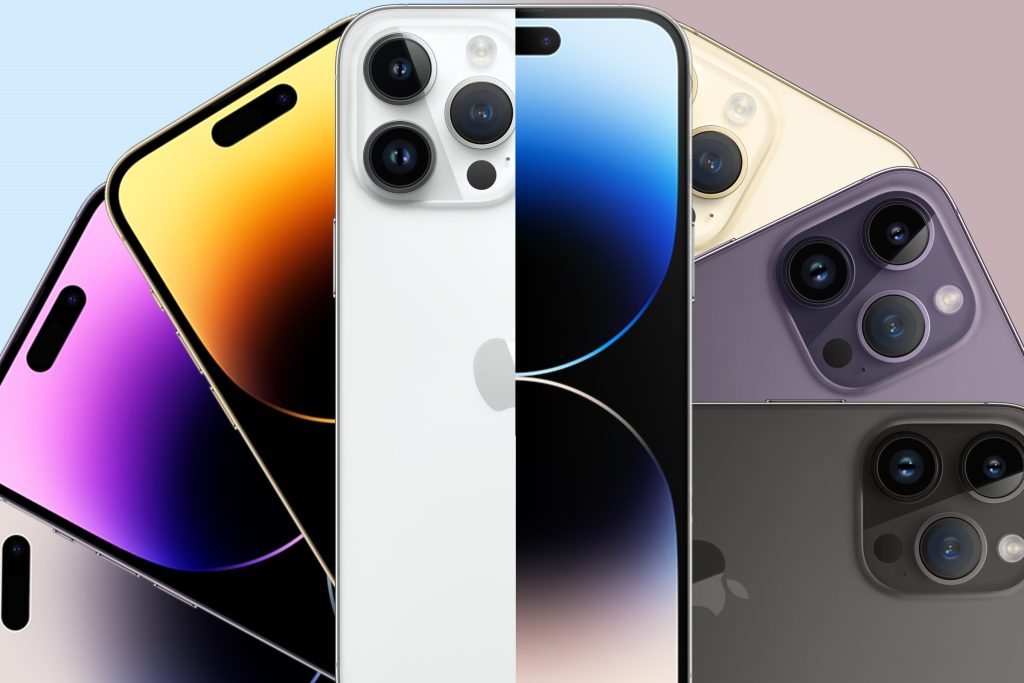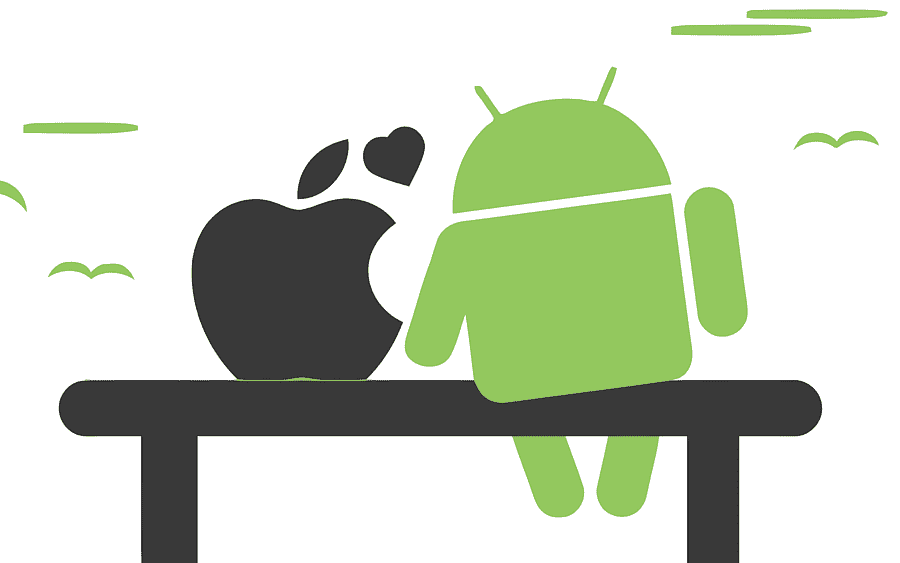Have you ever wondered why the debate between iPhone and Android users never ends? Choosing the right smartphone is a decision that influences almost every aspect of your daily life.
In a world where our phones are our constant companions this choice always matters to us. It’s about finding the phone that seamlessly fits your life, meets your needs and complements your preferences.
So in this guide, we’ll solve the complications of both iPhone and Android phones. We’ll help you navigate the features ecosystems and the experiences they offer so you can confidently choose the smartphone that’s truly right for you. Yes we are going to explore iPhone vs. Android phones!
So are you ready to go ahead on this journey of discovery? Let’s determine which iPhone vs. Android phones will get the stick.
Operating Systems and Software Of iPhone vs. Android Phone
iPhone iOS and Its Unique Features
iOS is the operating system that powers iPhones. This system plays a significant role in making iPhones what they are. It’s designed to be user-friendly and comes with cool features like Face ID for unlocking your phone just by looking at it. The App Store for iPhones is also famous for making sure all the apps you can download are safe and work well.
Android OS and Its Advantages
Android made by Google is the operating system for many different kinds of phones and it’s all about giving you choices. You can really make your phone your own with Android changing how it looks and works. Plus if you’re a big fan of Google features like Google Assistant and Google Photos Android fits right into that.
Your Experience And Comparison Between iPhone vs. Android Phones
When it comes to your experience both iOS and Android offer distinct advantages. iOS is celebrated for its simplicity and consistency across Apple devices and phones. They are also making it user-friendly especially for those new to smartphones.
On the other hand Android provides a more diverse experience due to the variety of phone options and customizations available. The choice between the two often boils down to your preferences – a clean and detailed experience with iOS or a more customizable and versatile experience with Android.
App Ecosystem and Customization (For iPhone Vs. Android)
Apple App Store vs. Google Play Store
Regarding apps Apple’s App Store and Google’s Play Store rule the competition. The App Store is known for being super strict ensuring all the apps are safe and work well.
On the other hand the Play Store is more relaxed. It gives app makers more freedom but that also means you might bump into a broader range of app quality.
App Availability and Quality
Both app stores provide millions of apps covering everything from productivity to gaming. However the availability and quality of specific apps can vary between iOS and Android. iOS often gets apps first and they tend to be more polished. While Android with its more extensive user base ensures a wide variety of apps including some niche ones.
Ultimately the choice might be your prioritization of early access and app polish (iOS) or a comprehensive selection (Android).
Customization Options
When it comes to customization Android takes the lead. Android phones and even its devices offer more freedom to modify your user interface from changing the home screen layout to using widgets for at-a-glance information. It’s a playground for those who love personalizing their phones. iOS is more restrictive in this regard.
However it has improved its customization options allowing users to add widgets and change app icons. The extent of customization you desire can significantly influence your choice between the two.
Camera Capabilities — iPhone vs. Android Phones
iPhone Camera Specs and Features
iPhones have always been great at taking pictures. They keep making their cameras better with every new iPhone. The latest ones come with cool features like different zoom lenses, night mode for low-light shots and fancy tech that makes your photos look fantastic.
And the best part? The iPhone camera app is super easy to use making your photos look fantastic even when the lighting isn’t perfect.
Android Camera Specs and Features
Android phones have a lot of different cameras and that’s cool. Samsung’s Galaxy phones can do all sorts of tricks with their cameras and Google’s Pixel phones are excellent at taking photos when it’s dark.
Most Android phones have things like zooming in close extra-wide lenses for big shots and innovative tech that makes your photos look even better. So if you’re into taking pictures Android has many options.
Camera Performance iPhone vs. Android Phone
Comparing cameras is tricky because Android phones come in all shapes and sizes. iPhones usually take colorful and sharp pictures especially in portrait mode. Android phones though give you more ways to play with your photos.
So it depends on what you like. IPhones are fantastic if you want photos that always look great without much struggle. If you’re a photo geek who loves trying new things, Android is where it’s at.
iPhone vs Android Displays — The Visual Experience
iPhone Display Technology
iPhones are known for their fantastic displays. They come in various sizes and offer sharp vibrant visuals.
● Screen Variety
Apple has different-sized screens from the compact iPhone Mini to the more significant iPhone 14 Pro Max. These screens are high-resolution so everything looks super clear. They use Super Retina XDR OLED tech which means you get bright colors, deep blacks and support for HDR. It is making your content ultimately pop.
● Special Display Features
iPhones also have some awesome display tricks. True Tone adjusts the screen’s color based on your surroundings which is comfortable for your eyes. Some models like the iPhone 13 Pro iPhone 14 and iPhone 14 Pro have ProMotion, a fancy tech that makes scrolling and using your phone super smooth with a 120Hz refresh rate. Apple’s Ceramic Shield glass makes the screen more challenging so that it can handle drops better.
Android Display Technology
In the world of Android there are many different types of screens to choose from so you can find one that suits your style.
● Explore the Range of Android Displays
Android smartphones come in various shapes and sizes especially regarding their displays. You can get smaller, more affordable ones with LCD screens or splurge on flagship models with big vibrant OLED displays. Some like Samsung even bend their screens for a super immersive feel. And for those who love smooth scrolling and gaming, some Androids have super-fast screens with 90Hz or 120Hz refresh rates.
● Unique Display Features
But what makes Android displays genuinely unique are their fancy features. Samsung’s Galaxy phones for example use Dynamic AMOLED screens which means they have fantastic colors and work great with HDR videos. Plus some Android phones have hidden fingerprint scanners right under the screen. Also the camera is slightly away from the screen giving you much screen space to enjoy.
Battery Life and Charging
iPhone Battery Life and Charging
Apple’s iPhones have seen steady improvements in battery life over the years. The exact battery life you can expect depends on the specific iPhone model and your usage patterns. Here we’ll provide an overview of iPhone battery life and charging options.
● Battery Life
Apple typically advertises the battery life of iPhones in terms of hours for activities like talk time video playback and web browsing. The latest iPhone models such as the iPhone 13 Pro Max, iPhone 14, or iPhone 14 Pro Max offer impressive battery life with up to 28 hours of talk time or up to 95 hours of audio playback.
● Charging
iPhones support both wired and wireless charging. They come with a Lightning port for wired charging and are compatible with various fast-charging options. For example you can use a 20W or higher adapter to fast-charge your iPhone for up to 50% battery in around 30 minutes. Apple’s MagSafe technology also allows wireless chargers and accessories to be attached easily.
Android Battery Life and Charging
Android smartphones vary widely in terms of battery life and charging capabilities. Manufacturers often prioritize different aspects of the user experience including battery performance.
● Battery Life
Android devices come in various battery capacities and their battery life depends on factors like screen size, processor efficiency and software optimizations. Flagship Android phones like the Samsung Galaxy S21 Ultra and Samsung Galaxy S23 offer substantial battery life often exceeding a day of moderate usage.
● Charging
Android phones come with a diverse range of charging options. Many support fast charging with some devices even offering 65W or higher charging speeds allowing you to top up your battery rapidly. Wireless charging is also standard in the Android world with some phones supporting proprietary wireless charging technologies similar to Apple’s MagSafe.
Battery Life iPhone vs. Android
Comparing the battery life of iPhones and Android Phones can be challenging due to the wide variety of Android models available. While some Android phones outperform iPhones regarding battery life others may fall behind. Ultimately the specific mobile you choose will tell the story of your battery experience.
Design and Build Quality — Android vs. iPhone
iPhone Design and Build
Regarding design and build quality Apple has always been a trendsetter. iPhones are renowned for their premium materials and iconic design elements.
● Materials Used
Apple stays caught up when it comes to materials. iPhones often use top-notch aluminum frames and strong glass making them attractive and challenging. The glass on the front and back isn’t just for style; it also enables wireless charging. Apple’s attention to detail extends to the buttons and the iconic logo on the back. iPhones have a distinct look that’s easy to recognize.
● Unique Design Features
iPhones are known for their sophisticated, smooth, minimalist design. Apple’s incredible attention to detail is seen in small things like where they put the buttons and the iconic Apple logo on the back. iPhones have a distinct look that’s easy to recognize.
Android Design and Build
The Android world is diverse when it comes to design. There’s no one-size-fits-all approach as different manufacturers bring their unique styles.
● Highlight Diversity in the Design Of Android
Android phones unlike iPhones come in various shapes and sizes with consistent design language. You can find Android phones with metal glass or plastic builds. Manufacturers like Samsung, Google, and OnePlus each have their design philosophy catering to a wide range of tastes. And this is the best part.
● Notable Design Elements
Manufacturers often add distinctive design elements to set their phones apart. For example Samsung’s Galaxy phones feature curved-edge displays giving them a futuristic look. Google’s Pixel phones emphasize simplicity and a distinctive two-tone rear design. On the other hand OnePlus devices often focus on a sleek and minimalist style.
Side-by-Side Comparison Of iPhone and Android Build Quality
Comparing the design and build quality of iPhones and Android phones is subjective. Apple prefers a simpler and consistent look while Android manufacturers like to be more daring with innovations like curved screens. Your choice depends on whether you prefer a timeless style or a more cutting-edge appearance. As for build quality both brands use top-quality materials so you can count on both being tough.
Security and Privacy
iPhone Security Features
iPhones are renowned for their strong security features. Apple has a reputation for prioritizing user privacy and data protection. Here are some key security features.
● Face ID and Touch ID
iPhones offer biometric authentication through Face ID (facial recognition) and Touch ID (fingerprint recognition). These methods provide secure and convenient access to your phone and apps.
● Secure Enclave
Apple’s Secure Enclave is like a super safe vault where they store important stuff like your fingerprints and passwords and nobody can break in.
● End-to-End Encryption
iMessage and FaceTime conversations and data stored in iCloud are encrypted end-to-end. This means that only you and the intended recipient can access the content.
Android Security Features
Android phones also offer powerful security features and the Android operating system continues to evolve. Key security elements include.
● Google Play Protect
Google’s built-in security system scans apps for malware and potential threats helping to keep your phone safe.
● Biometric Authentication
Like iPhones many Android phones offer fingerprint recognition and facial recognition for secure access.
● Google Play Updates
Google regularly releases security updates to address vulnerabilities and many Android manufacturers have improved their update processes to deliver patches more consistently.
Privacy Concerns and Solutions
Both iOS and Android have taken significant steps to enhance user privacy. However privacy concerns often center on data collection and how it’s used. Here’s how each platform addresses these concerns:
● iOS Privacy
Apple has introduced features like App Tracking Transparency requiring users to ask permission before tracking their data across other apps and websites. Additionally iOS includes detailed privacy reports showing users how apps access their data.
● Android Privacy
Android has also improved privacy controls allowing users to limit app permissions and control how apps access their data. Android 12 introduced a Privacy Dashboard to provide insights into how and when data is accessed.
In short iOS and Android care about protecting your data and privacy. The decision between them depends on how their privacy and security features match what you like. No matter which you pick, always remember to check your privacy settings and update your phone to stay safe.
Hardware and Performance Of iPhone And Android Phones
iPhone Hardware and Performance
Regarding hardware and performance Apple is known for its manageable control over its phones’ hardware and software.
● Discuss Apple’s Chipsets and Hardware Features
Apple’s custom-designed chips power iPhones. These processors are known for their exceptional performance and energy efficiency. For instance the A16 Bionic chip in the iPhone 14 Pro Max delivers extremely fast speeds. That’s how making multitasking and running demanding apps super easy. Apple’s hardware and software integration ensures that iPhones offer a smooth and responsive user experience.
● Performance Benchmarks
iPhones consistently shine in performance benchmarks. They often outperform many Android phones in tests like Geekbench and AnTuTu. This raw processing power translates into swift app launches, smooth navigation and smooth gaming.
Android Hardware and Performance
The Android ecosystem offers various hardware options catering to user needs and preferences.
● Explore the Variety of Android Hardware
Android phones come in all shapes and sizes with various processors from different manufacturers. If you prioritize camera capabilities, gaming performance or battery life you have an Android phone. For example Google’s Pixel phones are known for their exceptional cameras while gaming-focused phones like those from ASUS’s ROG series enjoy high-refresh-rate displays and advanced cooling systems.
● Performance Benchmarks
The performance of Android Phones can vary widely depending on the manufacturer and the specific model. While some flagship Android phones equipped with Qualcomm Snapdragon or Samsung Exynos processors can rival iPhones in benchmark tests others offer mid-range or budget performance. It’s essential to consider your specific needs when choosing an Android phone or device.
Performance is not solely about benchmarks; real-world usage matters more. Android’s flexibility allows for multitasking and customization but this can sometimes lead to variations in user experiences. Depending on your preferences and priorities you might find an Android phone that suits your needs perfectly.
Pricing and Availability
iPhone Pricing and Availability
iPhones are available in various models each with its price point. The latest flagship iPhones are among the most expensive smartphones on the market. However Apple also offers more budget-friendly options such as the iPhone SE and previous-generation models which can be a more affordable entry point into the iOS ecosystem.
Availability for iPhones is generally excellent. Apple’s products are sold in numerous countries through official Apple Stores carrier partners and authorized retailers. You can typically find the latest iPhone models shortly after their release.
Android Device Pricing and Availability
The Android ecosystem is incredibly diverse offering smartphones at various price points to suit different budgets. You can find high-end Android phones and devices that compete with the iPhone in terms of pricing and mid-range and budget-friendly options.
Availability for Android phones and devices varies depending on the manufacturer and the specific model. Flagship Android phones from major manufacturers like Samsung, Google and OnePlus are widely available in many regions. However availability may be more limited for niche or regional brands.
Value for Money Comparison
When comparing pricing between iPhones and Android phones it’s essential to consider the overall value for money. While iPhones can be more expensive upfront they often retain their value over time thanks to Apple’s long-term software support. This can make them a sound investment in the long run.
On the other hand Android phones offer a more comprehensive range of price options allowing users to choose a phone that fits their budget. However it’s crucial to research software update policies for specific manufacturers as some may need more long-lasting support than Apple.
The iPhone Experience
The iPhone Apple’s iconic creation has transformed how we communicate, work, and play. It’s not just a phone; it’s a status symbol, a fashion statement, and a powerful computing device all in one.
iOS vs. Android — Key Differences
One of your fundamental choices when picking a smartphone is between Apple’s iOS and Google’s Android. iOS is known for its sleek, intuitive design and strict control over the user experience. Android on the other hand offers more customization and is available on a wide range of devices.
Advantages of Choosing an iPhone
iPhones come with a range of benefits. They offer top-notch security and privacy features ensuring your data remains yours. The App Store is carefully curated providing a safer app environment. Plus Apple’s ecosystem allows smooth integration with other Apple devices like Macs, iPads, and Apple Watch.
Limitations of iPhones
However iPhones have their drawbacks. They come with a premium price tag which might not suit everyone’s budget. Customization options are limited compared to Android phones. And while iOS is user-friendly it could be more flexible for tech-savvy users who want to improve their phones.
The Android World
Android the operating system developed by Google is a versatile platform powering many smartphones and other devices. It offers a world of options from budget-friendly models to flagship powerhouses. Because they want to make sure there’s an Android device for everyone.
Android Versions and Customizations
One of the unique features of Android is its diversity. Manufacturers can customize Android to suit their vision. This means you’ll find a variety of Android versions with distinct interfaces like Samsung’s One UI Google’s Pixel Experience or OnePlus’ OxygenOS.
Advantages of Choosing an Android Phone
Android Phones have their own set of advantages. They are available at various prices making finding a phone that fits your budget more manageable. The Android ecosystem is open allowing for extensive customization and the ability to install apps from various sources. Plus if you prefer a choice in hardware you’ll find it with Android as different manufacturers offer unique features.
Limitations of Android Devices
But for some people, all the Android world choices can be a bit much. With so many options finding the perfect phone is challenging. Android’s open nature is excellent but can also mean it’s easier for bad stuff like viruses to enter. Plus how nice your phone feels to use can greatly change depending on who made it.
Conclusion
The choice ultimately hinges on your unique needs and preferences in the iPhone vs. Android battle. If you’re already settled in the Apple ecosystem an iPhone may be the natural choice for smooth integration and powerful support.
On the other hand if you value the freedom to tailor your smartphone experience Android’s offerings and customization options are compelling. Those on a budget will find Android phones across a broad price scale while Apple’s iPhones tend to be pricier.
However content creators and gamers may favor iPhones for their powerful cameras and early access to new apps. And if privacy is a paramount concern Apple’s stringent security features may tip the scales in its favor.
iPhone and Android have their excellence and both have developed to offer impressive capabilities. Ultimately the best smartphone for you is the one that best aligns with your lifestyle and needs!
